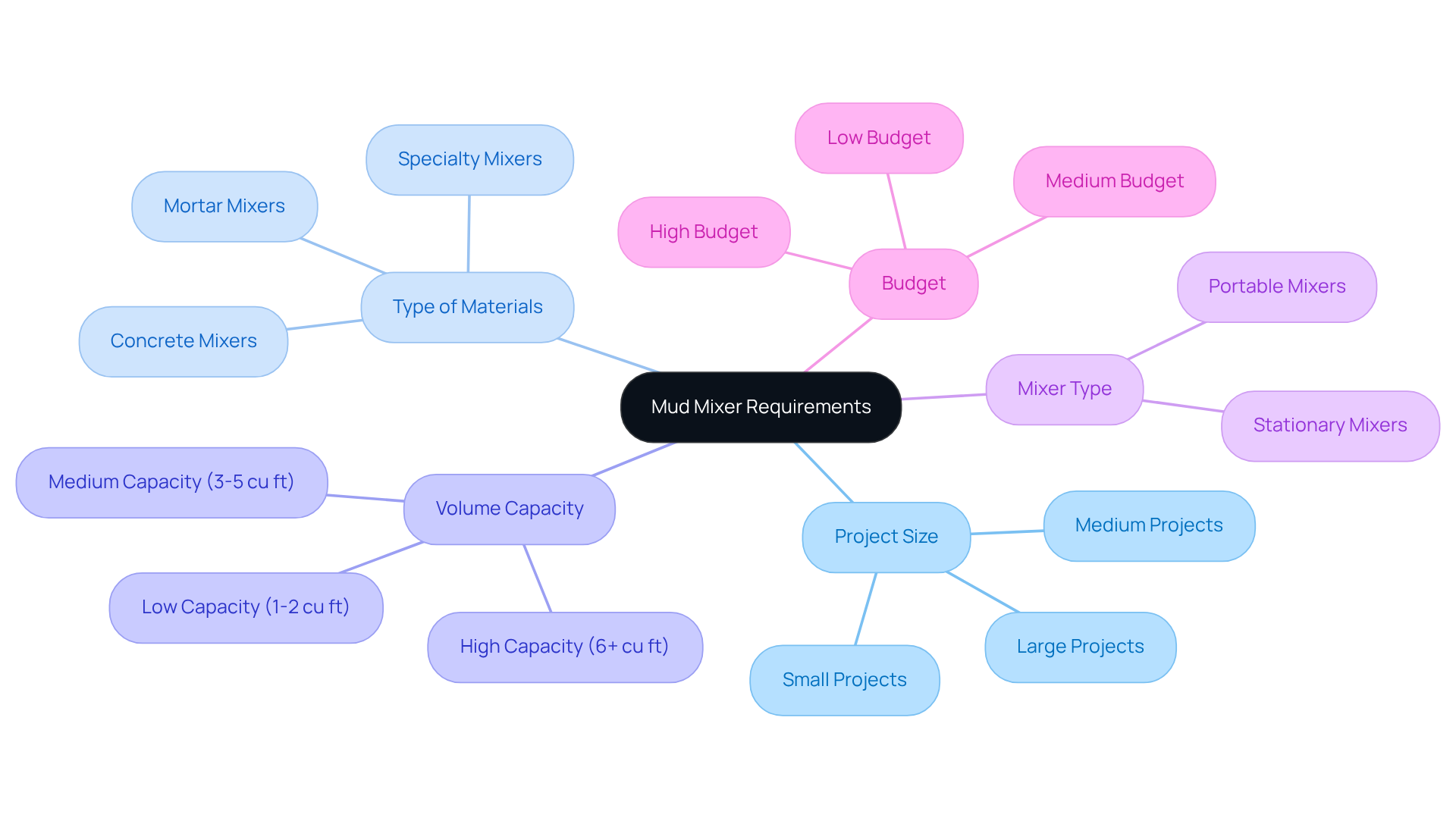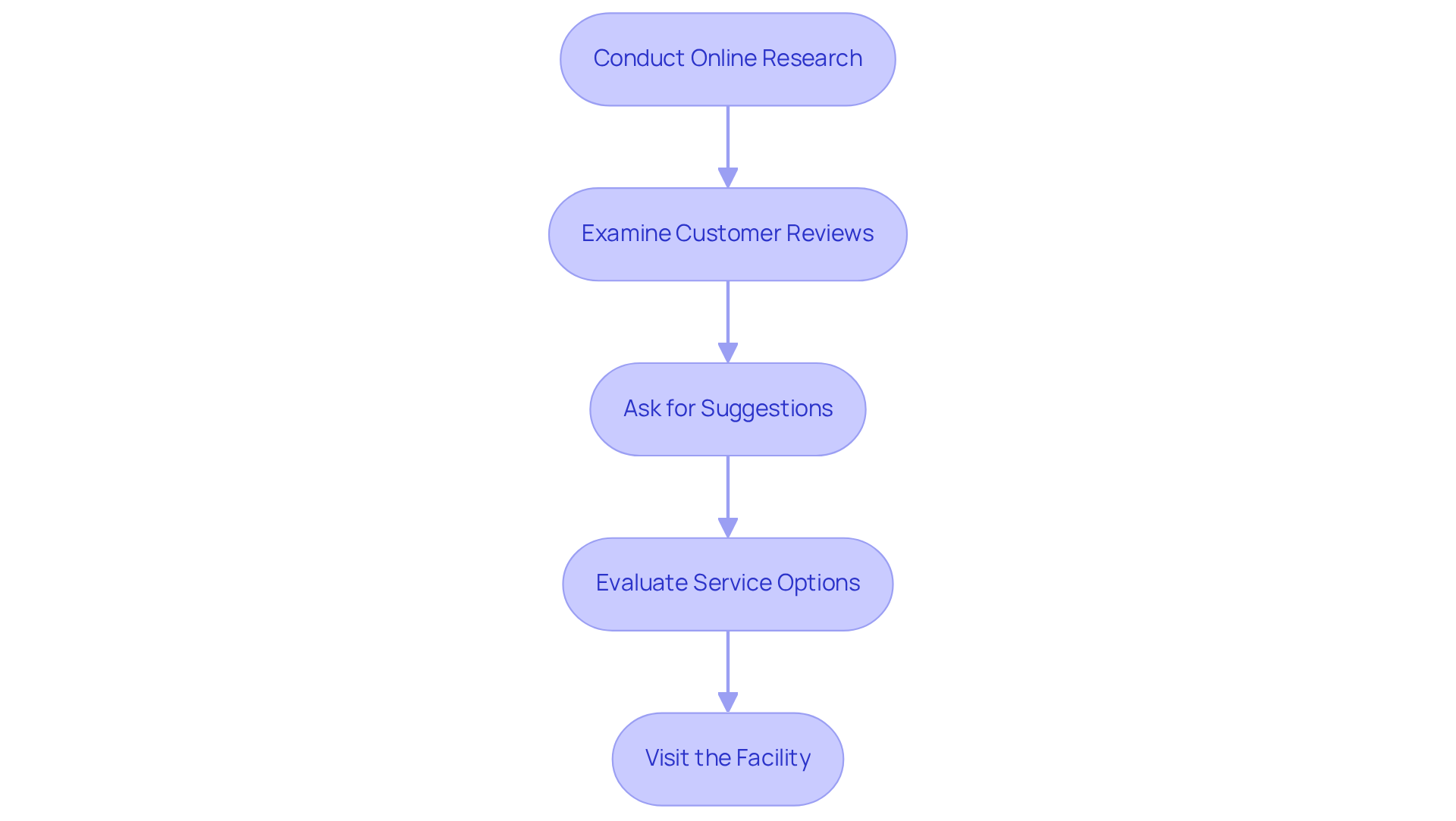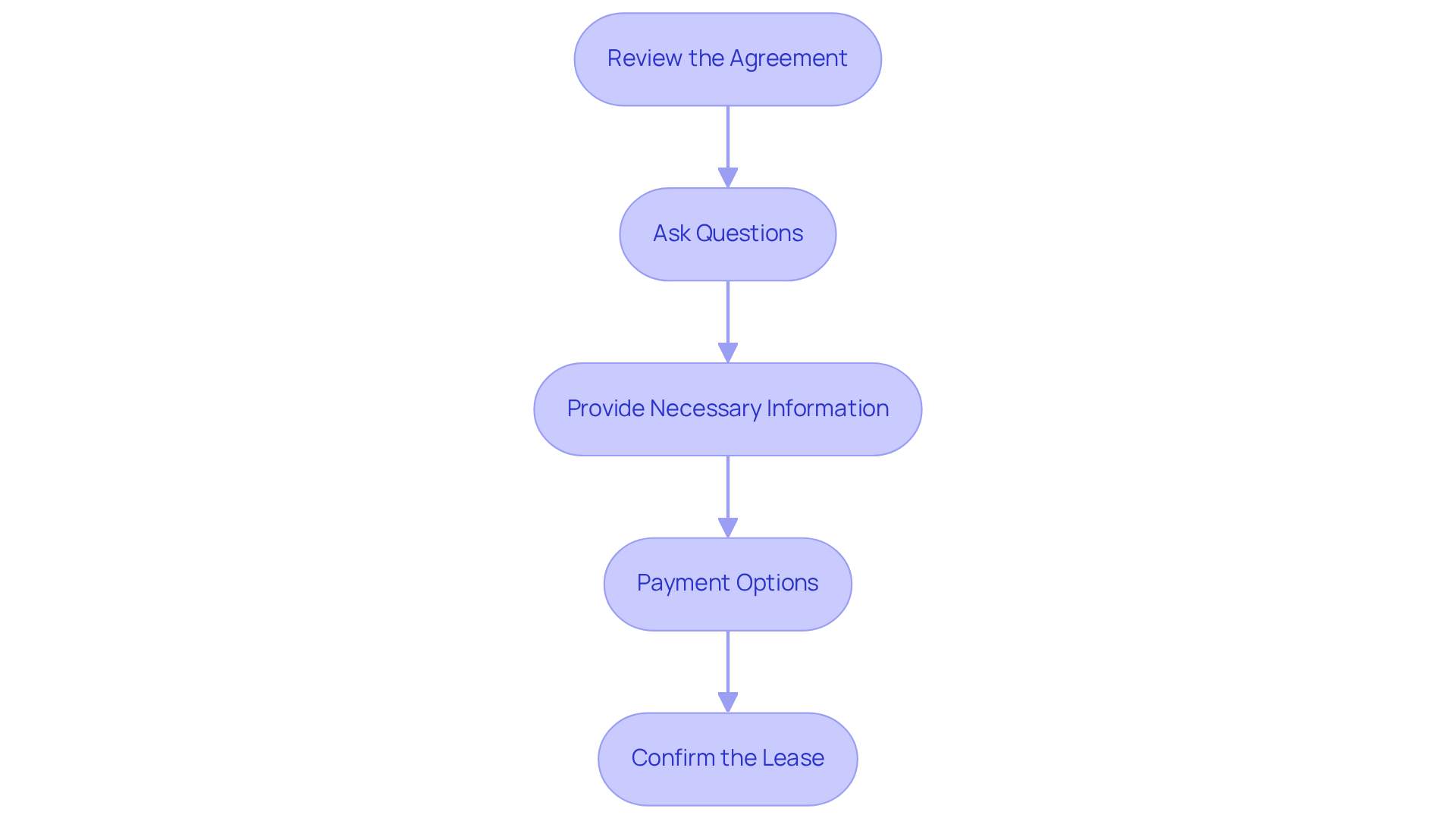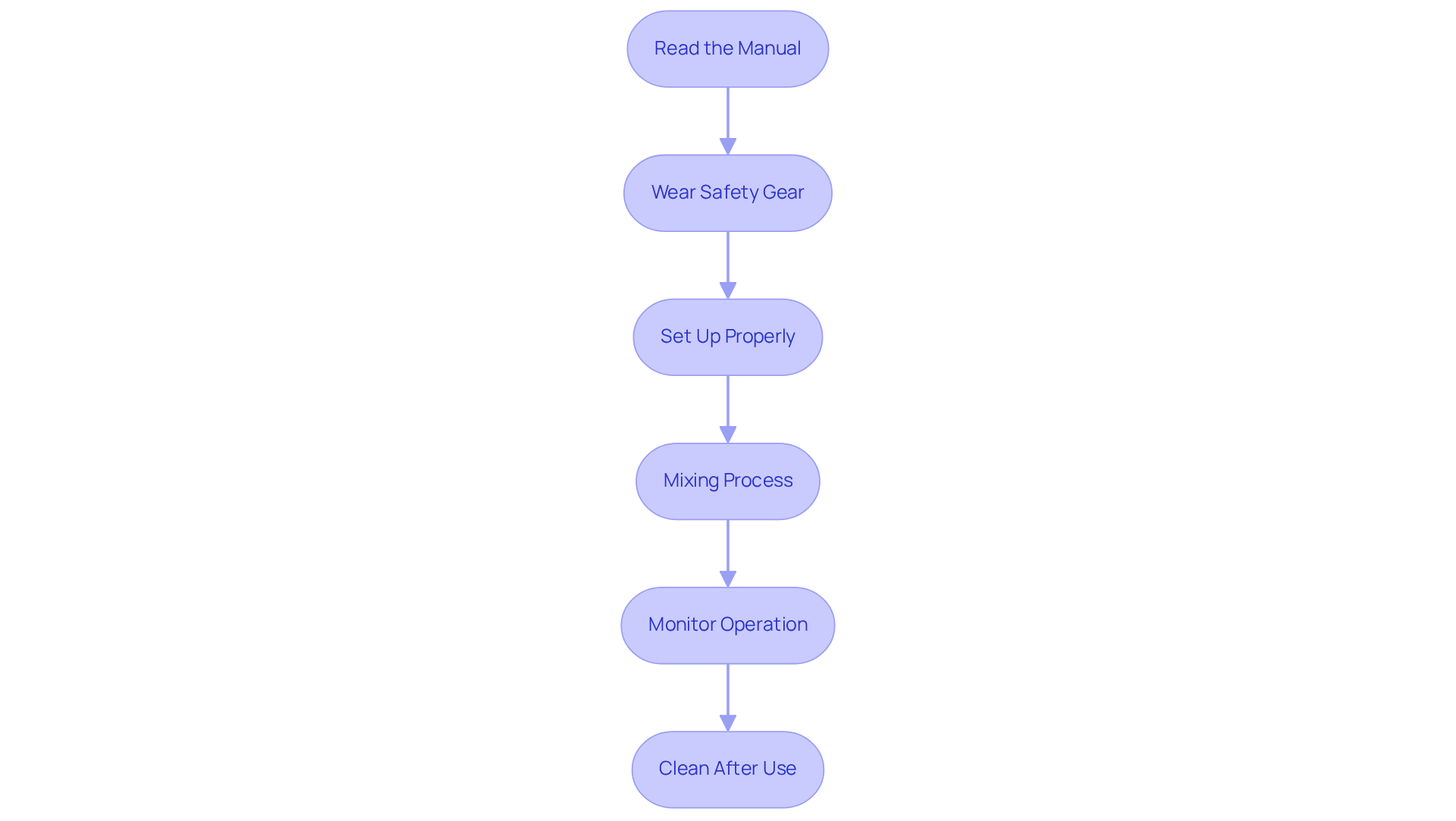Overview
This article serves as a comprehensive guide for project managers seeking to rent a mud mixer. It outlines essential steps, including:
- Assessing project needs
- Conducting thorough research on rental companies
- Understanding the rental agreement process
By evaluating equipment requirements, checking customer reviews, and ensuring proper operational safety, project managers can streamline the rental process and enhance project efficiency.
Assessing project needs is the first critical step. By understanding the specific requirements of the project, managers can select the most suitable equipment. Conducting thorough research on rental companies is equally vital; it allows managers to compare services and ensure they choose a reliable provider. Furthermore, understanding the rental agreement process helps avoid potential pitfalls, ensuring that all terms are clear and manageable.
The importance of evaluating equipment requirements cannot be overstated. This ensures that the selected mud mixer meets the demands of the project. Checking customer reviews provides insights into the reliability of rental companies, while ensuring proper operational safety safeguards against accidents and equipment failure. Collectively, these steps enhance the overall efficiency of the project and foster a smooth rental experience.
In conclusion, project managers are encouraged to take these steps seriously to optimize their equipment rental process. By doing so, they not only ensure the success of their projects but also build a foundation of reliability and quality that can be relied upon in future endeavors.
Key Highlights:
- Assess project needs by evaluating project size, material type, capacity, portability, and budget before renting a mud mixer.
- Conduct online research to find local rental companies specialising in construction machinery.
- Examine customer reviews on platforms like Google and Yelp to gauge the reliability of rental companies.
- Seek recommendations from colleagues or industry associates based on their experiences with rental services.
- Visit rental facilities to inspect equipment and assess professionalism before making a decision.
- Review the rental agreement carefully, asking questions to clarify any unclear terms.
- Complete necessary forms with accurate project information to streamline the leasing process.
- Confirm payment options with the rental company, ensuring a smooth transaction.
- Follow operational guidelines for safe use, including reading the manual and wearing appropriate safety gear.
- Set up the mixer on a stable surface, monitor its operation, and clean it thoroughly after use to maintain its condition.
Introduction
Navigating the world of construction equipment rentals can be a daunting task, particularly when selecting the right tools for specific projects. Mud mixers, among these essential tools, play a crucial role in ensuring that materials are blended effectively and efficiently.
This guide serves as a comprehensive roadmap for project managers to:
- Identify their mud mixer requirements
- Find reputable rental companies
- Complete rental agreements
- Operate the equipment safely
With numerous options available, how can one ensure they are making the best choice for their project needs?
Identify Your Mud Mixer Requirements
Before deciding where to rent a mud mixer, it is essential to assess your project needs by considering several key factors. First, evaluate the project size; larger projects may require a more robust appliance with a higher capacity. Next, identify the type of materials you will be mixing, such as concrete or mortar, as various blending devices are specifically designed for particular substances. Additionally, select a device that can accommodate the volume of material needed for blending at one time, and be sure to check the specifications for capacity ratings. Furthermore, consider whether you require a stationary or portable mixer based on your job site layout, as this can significantly impact efficiency. Lastly, establish a budget for the leasing process to effectively narrow down your options. By clearly outlining these needs, you can streamline the leasing process and find out where to rent a mud mixer to ensure you select the appropriate tools for your project.

Research and Select a Reputable Rental Company
To identify a reputable rental company for your mud mixer, it is essential to follow a structured approach:
-
Conduct Online Research: Begin by searching for equipment leasing businesses in your area, particularly those specializing in construction machinery. This foundational step will help you identify potential candidates that meet your needs.
-
Examine Customer Reviews: Utilize platforms such as Google, Yelp, or dedicated construction forums to assess customer feedback. Positive reviews often indicate an organization's reliability and service quality, making them a crucial factor in your decision-making process.
-
Ask for Suggestions: Reach out to colleagues or industry associates for their insights and recommendations based on direct experiences with leasing services. Their firsthand accounts can provide valuable context and help narrow down your options.
-
Evaluate Service Options: Look for businesses that offer a diverse selection of tools, flexible leasing conditions, and outstanding customer support. An organization with a high BBB rating, like EZ Equipment Rental's A+, serves as a strong indicator of quality service.
-
Visit the Facility: If feasible, visit the leasing service to inspect the equipment and gauge their professionalism. This firsthand experience can yield significant insights into their operations and customer service.
By following these steps, you can make an informed decision about where to rent a mud mixer that meets your project requirements and expectations.

Complete the Rental Agreement and Payment Process
To successfully complete the rental agreement and payment process for a mud mixer, follow these essential steps:
- Review the Agreement: Thoroughly examine the lease agreement, focusing on critical terms such as duration, fees, and responsibilities for damages. A clear understanding here can prevent common disputes.
- Ask Questions: If any terms are unclear, proactively seek clarification from the leasing firm. This step is crucial, as misunderstandings can lead to significant issues later on.
- Provide Necessary Information: Complete all required forms, ensuring you include details like your project timeline and contact information. Precise information assists in simplifying the leasing process.
- Payment Options: Inquire about the accepted payment methods. Most leasing companies accommodate various options, including credit cards, checks, and cash, which can facilitate smoother transactions.
- Confirm the Lease: After completing the paperwork and payment, verify all lease details, including pickup or delivery arrangements. This confirmation reinforces your comprehension of the leasing terms and ensures that both parties are aligned.
By following these steps, you can navigate the rental process with confidence, including understanding where to rent a mud mixer, minimizing potential pitfalls and ensuring clarity in your rental terms and obligations.

Learn to Operate the Mud Mixer Safely and Effectively
To operate the mud mixer safely and effectively, adhere to the following guidelines:
- Read the Manual: Familiarize yourself with the manufacturer's manual to understand the mixer’s features and operational guidelines. This step is crucial for safe and efficient use.
- Wear Safety Gear: Always don appropriate personal protective gear (PPE), such as gloves, goggles, and a dust mask. Safety experts highlight that appropriate PPE greatly decreases the likelihood of injury during machinery operation. As noted by the Nova Scotia Construction Safety Association, "the most frequently injured body part is the back, accounting for 30.8% of injuries, highlighting the importance of proper safety gear."
- Set Up Properly: Ensure the device is positioned on a stable surface, and verify that all safety guards are in place before starting. A secure setup minimizes the risk of accidents.
- Mixing Process: Follow the recommended mixing procedures, including the correct order of adding materials, to achieve optimal consistency. Adhering to these guidelines enhances the quality of your mix.
- Monitor Operation: Keep a close watch on the machine during operation to ensure it functions correctly and to prevent overloading, which can lead to device failure. Statistics show that 36.7% of accidents in the construction industry are caused by loss of balance, underscoring the need for vigilance.
- Clean After Use: After finishing your mixing tasks, thoroughly clean the device to prevent material buildup and ensure it is ready for the next use. Regular maintenance is key to prolonging the equipment's lifespan.
By following these safety and operational guidelines, you can maximize the efficiency of your mud mixer while maintaining a safe working environment. Additionally, referencing case studies on occupational safety risks in the ready-mixed concrete industry can provide further context for the necessity of adhering to these guidelines.

Conclusion
Understanding where to rent a mud mixer is essential for project managers who seek to ensure efficiency and effectiveness in their construction tasks. By thoroughly assessing project requirements, selecting a reputable rental company, completing the rental agreement with meticulous attention to detail, and adhering to safety guidelines during operation, project managers can secure the right equipment and utilize it effectively.
Key arguments presented in the article underscore the significance of evaluating project size, material types, and budget constraints when determining mud mixer requirements. Furthermore, researching rental companies, examining customer reviews, and inspecting equipment firsthand are vital steps in making an informed choice. Accurately completing the rental agreement and following safety protocols during operation further guarantees that the mud mixer is used to its full potential while minimizing risks.
In conclusion, renting a mud mixer transcends merely acquiring equipment; it embodies a strategic approach that can profoundly influence project outcomes. By applying the insights from this guide, project managers can not only streamline their rental experience but also elevate the overall quality and safety of their work. Dedicating time to follow these steps will lead to more successful projects and a safer working environment.
Frequently Asked Questions
What should I consider before renting a mud mixer?
Before renting a mud mixer, you should assess your project needs by evaluating the project size, the type of materials you will be mixing, the volume of material needed for blending, whether you need a stationary or portable mixer, and your budget.
How does project size affect the choice of mud mixer?
Larger projects may require a more robust mud mixer with a higher capacity to handle the increased volume of material effectively.
Why is it important to identify the type of materials for mixing?
Different blending devices are specifically designed for particular substances, such as concrete or mortar, so identifying the type of materials ensures you select the appropriate mixer.
What is the significance of capacity ratings in mud mixers?
Checking the specifications for capacity ratings helps you select a device that can accommodate the volume of material needed for blending at one time.
Should I choose a stationary or portable mixer?
The choice between a stationary or portable mixer depends on your job site layout, as this can significantly impact efficiency.
How can I streamline the leasing process for a mud mixer?
By clearly outlining your needs, including project size, material type, volume, mixer type, and budget, you can streamline the leasing process and find the right mud mixer for your project.




